Monday Morning Update 10/18/10
From Improper Setting, Here: “Re: CVS is caught stocking meth labs.” A $75 million software bug? Drug chain CVS is fined that amount for illegally selling pseudoephedrine (generic Sudafed) from its stores in California and Nevada. The congestion remedy had been moved to behind-the-counter sales since it’s used to manufacture methamphetamine. Meth makers found that they could simply make repeated buying trips to CVS to accumulate enough of the drug, made possible by a CVS software bug that couldn’t detect repeat sales. The apparent personal best: one customer bought the drug 10 times in 53 minutes from a single CVS store.
From Alicia: “Re: IntraNexus and biometrics. A big piece missing in medical device integration is patient identification, where this might be useful to bind patient ID to medical devices, especially if what they say about vein print is true. Right now you need a myriad of systems such as RFID and/or bar code and it’s usually done indirectly by bed number association.” The shots above from Fujitsu’s PalmSecure illustrate the concept.
From The Purple Computer: “Re: UPMC. Say it and people will come. How many nurses are they giving up?” UPMC rolls out a $16 million “branding campaign” centered around bold, humanitarian healthcare thinking — a purple logo (“fresh and progressive, yet warm and feminine … distinguishes us from the sea of blue in the academic medical center and health insurance space.”) Obviously they’ve let the marketing people run wild. Non-profit hospitals have gone over the edge when they start throwing around terms like “space” to refer to healthcare delivery. If their hospitals aren’t already full, I doubt there are enough patients will switch just because they’re tired of the blue-logo places. Maybe their competitors (if any are left other than West Penn) should run their own UPMC ads during Unemployment TV hours (daytime judge, talk, and soap programs) to dump more uninsured patients onto the newly purpled.
From Jailbreak: “Re: EMR vendor VP. I wrote you before about a sales VP with a criminal record and am amazed his new EMR employer didn’t check references. Here’s a threat to me from the VP, who can’t even write.” I’ve omitted names and details, but the purported e-mail from the VP, nearly unintelligible, is kind of fun in an illiterate, ransom note kind of way: “Why are you such a [genitalia synonym omitted] and hide you indenty .. Law suit coming … You dam well i never stole nothing from you … I will make sure I get on EVERY doctor website (EMRUPDATE) for example to let them know how bad and far back the [company name omitted] technology is … will not even get a whiff of 2011 cchit and over the EMR SUCKS The statements will come from various doctors … NOMATTER what you do I survive.”
From DyingToKnow: “Re: HCA. Persistent rumor in KC this week – HCA is switching from Meditech to Cerner. What’s the real scoop?” I mentioned from a sound inside source that HCA is doing a small Cerner pilot, facing an extensive effort and cost to move to Meditech 6.0 and figuring they might as well explore their options. I think that’s the limit of HCA’s commitment so far.
From Volare, WoOh: “Re: Moses Cone. They had a 1.5 hour recorded demo of Epic on their physician page, but it looks like it’s been taken down. There is also a CEO video talking about the $80-120 million Epic investment over the next five years.”
From Yosemite Sam: “Re: Most Wired award. I heard that AHA is discontinuing it. Maybe the commentary on HIStalk made them see the light.” Unverified. It can’t be because the award is pointless since that’s always been the case, so I’ll go with the obvious: with Meaningful Use, who cares about a phony award sponsored by skin-in-the-game HIT vendors and magazines trying (but failing) to perpetuate the myth that more HIT is always better? If the rumor is true, the CIO dilemma begins: should you leave the Most Wired vanity entry on your resume once the award is sunsetted? Here’s the award that actually means something: use IT to improve patient outcomes and/or reduce your costs, in which case your reputation will precede you without your having to wave flimsy evidence of it around. Too bad there’s no profit involved in that to attract the interest of AHA, HHN, CHIME, McKesson, and the other Most Wired conspicuous HIT consumption cheerleaders.
From HIT Geek: “Re: Siemens layoffs. The timing of Siemens layoffs follows the fiscal calendar. They are often announced on or shortly before the fiscal year-end (9/30). This year’s round is no exception. It is numbers-driven, with no concern for holidays or employee morale.” You would think well-educated MBA-type VPs could use their legendary quantitative skills to look forward more than one quarter, but that never seems to happen with any company. It’s like, holy crap it’s year end and the numbers suck, so start dumping people.
From Hogs Get Slaughtered: “Re: Cerner and Ingenix. Gonna take on 3M’s monopoly and crazy, hostage-style pricing.” Cerner will integrate coding and PPS solutions from Ingenix with Millennium.
From Kay: “Re: patient estimation tools. Patients want to know what the cost of the service will be and how much they will owe. The time of ‘wait and see’ is over — not just what it costs, but how much they will have to pay. Thirty states require the hospital to provide cost information. Vendors that provide a quick and easy 270/271 transaction code check based upon the hospital’s charge master cost for the service and the patient’s insurance plan would be able to provide the most accurate estimate for the patient. A cost estimate at time of scheduling, pre-reg, or registration will meet state requirements and help the hospital compete. Time-of-service collection of the accurate out-of-pocket balance reduces collection expense and bad debt. These tools also allow checking addresses and creditworthiness. With medical identify theft on the rise, being able to immediately know that the ID provided by the patient may be associated with ID theft protects the hospital from lost revenue and also prevents the contamination of the EMR.” Kay works for Iatric Systems, which offers this kind of solution.
From ePatient Advocate: “Re: PracticeFusion. The ad-supported vendor said at Health 2.0 that they are the largest and fastest-growing EHR. No breakdown on how many are getting ‘free’ (aka pharma ad-sponsored version) and if patients want their docs to be getting drug rep visits via their EHR.” There’s an overview and demo above, just in case you’re interested. I didn’t watch it all, but ads and patient data sales didn’t seem to be emphasized.
I’m back from a break. Thanks to Inga for capably covering while I was away. I’m sure I’ll inadvertently repeat some of what she wrote about last week, but I’ll catch up eventually. That wasn’t really me in the picture she ran, by the way — that was just some sly Inga impishness. And thank God she didn’t sent out minute-by-minute Chilean miner updates since apparently the entire world had two full days to ignore pressing problems while watching feel-good bios of oppressed miners now turned instant but probably short-lived superstars (the most interesting aspect of that story is that the mining company is too broke to even pay their wages, much less the dozens of millions it cost a previously safety-indifferent government to get them out to create the mother of all political photo opportunities).
I bet not many people can say they couldn’t wait for vacation to be over to get back to their jobs, but I can (especially my HIStalk “job”, but I even missed my hospital one). I missed seeing people in scrubs and white coats, feeling the on-campus energy, and doing geeky IT stuff.
Readers don’t have a lot of confidence in the ability of Windows Phone 7 to compete with iPhone and Droid, it seems. New poll to your right — another economy check. From your employer’s perspective, how is the economy doing compared to six months ago? All I know is that my IRA value went up 10% last month, which is nearly as fast as it was going down for the past several.
Chuck Christian (Good Samaritan Hospital) and Judy Kirby (Kirby Partners) win the CHIME Collaboration Award for writing the IT internal marketing book that I’ve mentioned here previously. Chuck co-wrote it with Kirby VP Steve Bennett.
Yuma Regional Medical Center (AZ) names pediatrician Bart Bernstein, MD as its CMIO. He will lead the 333-bed hospital’s Epic implementation, which is costing $73 million. I noticed that the hospital has put up a website hoping to recruit candidates for its 40 newly open Epic-related positions. For some reason, they spell Epic as EPIC, which I see often but don’t understand since even Epic doesn’t go all-caps (unlike Meditech or MEDITECH, whichever is correct since I can’t figure that out at all). My rule is that only acronyms get capitalized and neither Epic nor Meditech is an acronym. It‘s usually those UPMC-style run-amok marketeers that demand to capitalize words against all logic or to stick annoying symbols on them like a proud rancher branding his steers.
Getting a local paper Epic mention: University of Colorado Hospital, spending $67 million.
Listening: the brand new debut album from The Band Perry, three young siblings cranking out polished country pop that sounds more genuine than the usual Disney-style, photogenic and overproduced hat-wearing faux cowboys/cowgirls pretending to know who George Jones and Ralph Stanley are but whose impeccable makeup might melt at the sight of an actual mandolin or pedal steel guitar. They’re from one of my favorite small towns: Greeneville, TN.
Stuff you can do if you want: (a) add your item free to the HIStalk Events Calendar; (b) click the Like button on the Facebook widget to your right or friend Inga or me; (c) search the amazingly deep HIStalk archives using the Search All HIStalk Sites box to your right; (d) send me rumors, news, or a Readers Write article; (e) check out the other sites, HIStalk Practice and HIStalk Mobile; (f) support my sponsors by perusing the ads to your left and clicking any of interest to see what’s new with the folks who keep the virtual printing presses running here at HIStalk; (g) thank yourself on my behalf for reading and for telling others about HIStalk.
On the Sponsor Job Board: Healthcare Consulting Principal – Washington DC, Allscripts Consultants, McKesson Build Analyst. On Healthcare IT Jobs: Senior Analyst – Provider Integration, Application Specialist, Clinical Sales Specialist, Epic Project Managers.
It’s American Idol, EMR style. Intellect Resources, looking to quickly hire 90 short-term Epic trainers for Mount Sinai Medical Center, is running a one-day audition in New York on November 5. The job pays a fixed rate of $20 per hour and lasts for a maximum of 24 weeks.
The Milwaukee newspaper profiles Epic with some interesting facts, with the most interesting one being confirmation of our June report that Aurora is dumping its $150 million Cerner system for Epic, which will cost them an additional $100 million. A quarter billion dollars seems like a lot for an EMR considering that Aurora showed a $50 million loss two years ago and a $116 million loss last year. For that performance, the CEO was paid $2.3 million last year (including a million-dollar bonus), the COO made $2.2 million (another million-dollar bonus), two other VPs made more than $1 million (both with >$500K bonuses), and the CIO took home $739K (including a $250K bonus). All while laying people off, of course.
That article about Epic values the company at $2.6 billion, or just 3.3 times revenues. That seems about right given that Cerner’s market cap is just over 4x sales and is better diversified, although Cerner is probably less profitable for the same reason.
Gary York, the founder of patient visibility vendor Awarix that was bought by McKesson in 2007 (and who was also founder of imaging vendor Emageon, since acquired by Merge Healthcare) is named board chair of Emergency CallWorx, an Alabama-based 911 and incident management software vendor.
A Florida business paper does a nice profile on nurse communication system vendor Voalte, mentioning its rapid growth (20 clients expected by the end of 2011) and its legendary pink pants. Trey Lauderdale told me that Inga gets some credit for those since he asked us for advice before the company’s first HIMSS exhibit awhile back and joked about needing to stand out among the larger and better located ($$$) booths. I don’t recall the details, but Inga either dared them to wear pink pants or picked up on Trey’s joke that they were thinking about it and she ran it in HIStalk before he could change his mind. The rest is history, as the pink represents the company’s fresh culture. Shockingly, we don’t get asked for advice all that often despite having other colors on reserve for those occasions.
GE reports bad Q3 numbers as it tries to shed its GE Capital baggage. Net income dropped 18% and sales fell short of estimates, although Jeff Immelt says orders are picking up (I’m always wary when the audited numbers are bad but the unaudited anecdotes are rosy). GE says its performance was dragged down by the $1.1 billion it had to pump into a Japanese finance division. GE Healthcare’s performance was the only bright spot, with revenue up 4% and profits up 14%.
Speaking of GE Healthcare, it announces a CCD-powered tool for Centricity that allows exchanging basic patient information with non-GE EMRs.
A veteran is denied his request to return to active duty in Afghanistan when a Pentagon doctor using DoD’s AHLTA EMR sees his post-traumatic stress treatment records from the VA’s VistA system. The VA is treating the incident as a data breach since the AHLTA-VistA interface isn’t supposed to exchange information of that type. VA CIO Roger Baker actually suggested that doctors not enter progress notes into VistA if they can’t figure out how to keep it from being viewed in AHLTA. On the other hand, the VA wants to rewrite/replace VistA at huge taxpayer expense, so that kind of warning would help the argument, I’m just saying.
Speaking of DoD, the GAO says the $2 billion AHLTA EMR (double that cost by many accounts, up to $20 billion by some estimates) is mediocre at best (limited capabilities and performance problems) and will be replaced by 2015 with something called "EHR Way Ahead,” with $302 million requested for FY2011. Northrop Grumman got billions to develop and maintain AHLTA (the EMR formerly known as CHCS II before it was rebranded in a PR-company led attempt to hide its many warts), so I’m sure they consider themselves an obvious choice to take a second uber-expensive swing at the ball. In any case, regional droughts are being relieved by vendor and fat cat contractor salivation. I love these AHLTA comments from student doctors:
- My favorite are the contractors who keep explaining how much easier it is to use than a real chart. I wonder how much medicine they practice.
- They tell you that all you need to do to fix the system, is keep sending trouble tickets in. since when did software testing get added to my job description? i want out, and as far away from AHLTA as possible.
- I remember watching the PGUI instructor (similar to AHLTA) show us how "wonderful" that system was. He pretended the pt was there for an asthma appt. I kept track of the time it took just for him (the specialist) to enter the info and the time the computer was "thinking" (hourglass sign). It took 7 1/2 minutes.
- I was the last holdout and management basically had to come down and hold a pistol to my head to get me to stop writing 600s. I still order things in CHCS and document it later in AHLTA when I get around to finishing notes in the evening. This is the biggest turd of a program I’ve ever seen.
- I haven’t met an AHLTA contractor yet that I would hire to help anybody program their VCR.
- For new users, if you’re trying to add a consult and it keeps kicking it out, 95% of the time you can fix it by adding a med first (I like rectal Tylenol), then adding the consult, then go and delete the med. Ha ha of course the fact that I have to do this to work around the bug lets you know how screwed up AHLTA is in the first place.
- What I hate is that, while psych notes are require a "break the glass" thing to access, the actual psych/counseling diagnoses appear on the front of every note created. Thus some poor kid talks to a social worker about problems with his wife, and every subsequent note has "MARITAL PROBLEMS" plastered to the top of it.
- It’s funny, I think AHLTA is the most universally despised part of military medicine. Anything else: GMOs, Base Locations, volume of procedures, whatever, you’ll find someone who had a good experience. AHLTA the opinions just seem to vary between ‘it’s pretty bad’ and ‘I’m armed and hiding outside the programmer’s house’.
When anesthesiologists talk about patient safety, I listen, because that group is the only one of all medical disciplines that admitted their own problems and went off on their own to reduce surgery-related mortality by a huge percentage (see: Peter Pronovost). The Anesthesia Patient Safety Foundation has new recommendations (warning: PDF) for medication safety in the OR, indicating its willingness to surrender anesthesiologist independence in the interests of patient safety: (a) put pharmacists in the OR; (b) use high-alert drugs only as premixed products and administered by smart pump; (c) bar code check meds before administration and with decision support and documentation built in; (d) use case kits whenever possible and do not let providers prepare their own drug doses; and (e) establish a just culture for error reporting. Not to perpetuate a stereotype, but if surgeons weren’t collectively such pouting egotistical cowboys, they might save more patients instead of arrogantly standing in the huge patient safety shadow cast by their anesthesiologist colleagues.
Verizon expands its Medical Data Exchange beyond simple dictated notes to include images and lab results. It also announces new partnerships: MD-IT for applications, Alert Notification for communication, Amaji for clinical documentation, Tolven for applications, NLP for natural language processing, ZyDoc Medical Transcription for transcription. I’ve never heard of MD-IT, but I was interested that one of its founders and board chair is an MD/PhD who founded the company that claims to have developed the first antivirus software, later sold to Symantec to become Norton Antivirus. He also founded Cybertrust, which Verizon Business bought in 2007. I guess he didn’t need to practice medicine.
Nurses at Children’s Hospital of Oakland go on strike after management makes them pay 15% of the cost of their healthcare benefits, which have risen 80% in the past five years. The hospital says the nurses all make at least $136K per year and the benefits will cost them only $4,000. Can they really be paying staff nurses $136K?



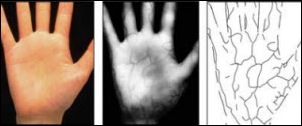

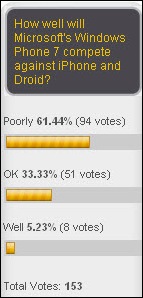

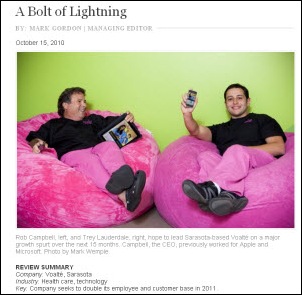




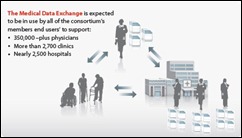













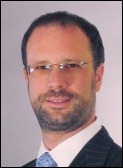






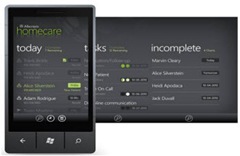
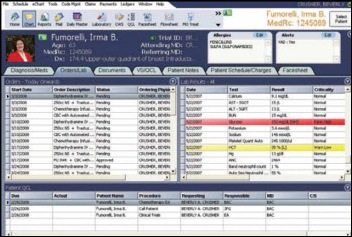

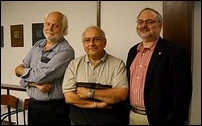


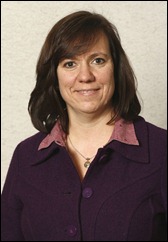




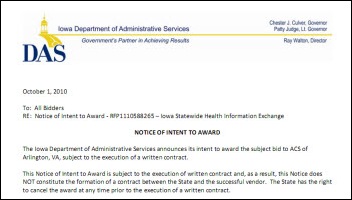


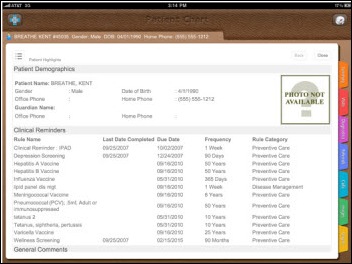

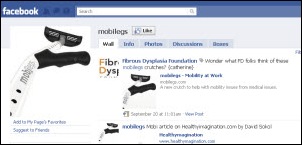

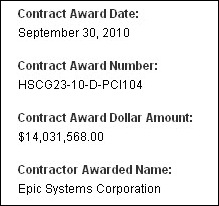

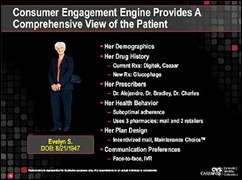


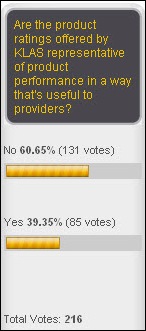


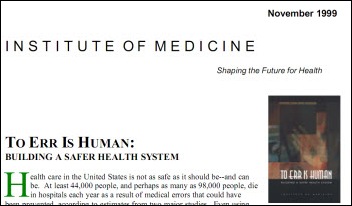





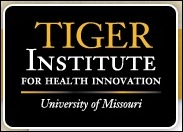




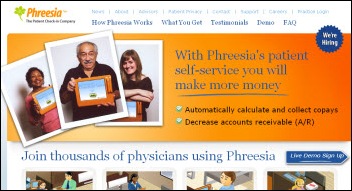

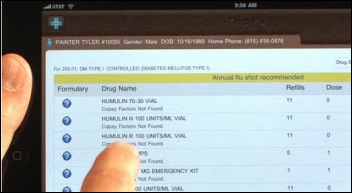




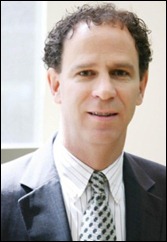









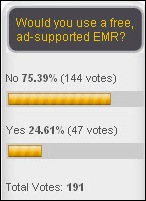




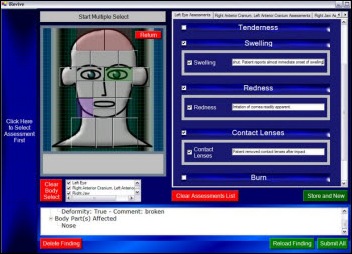
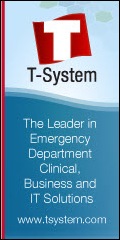
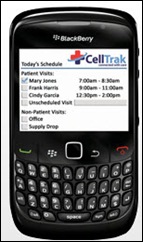
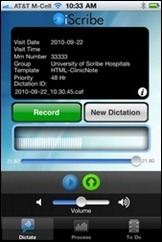



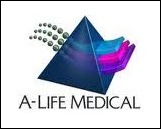

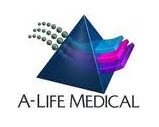

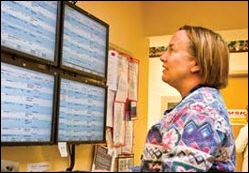
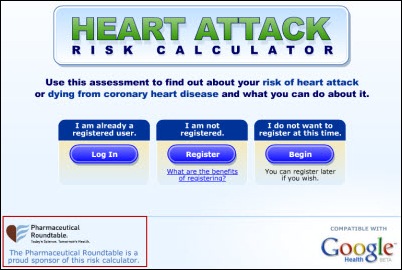




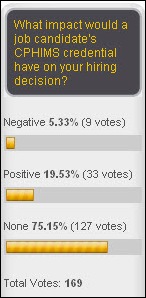





















































































Would have liked to have seen more about Expanse here. Would like to see more about it on this site…